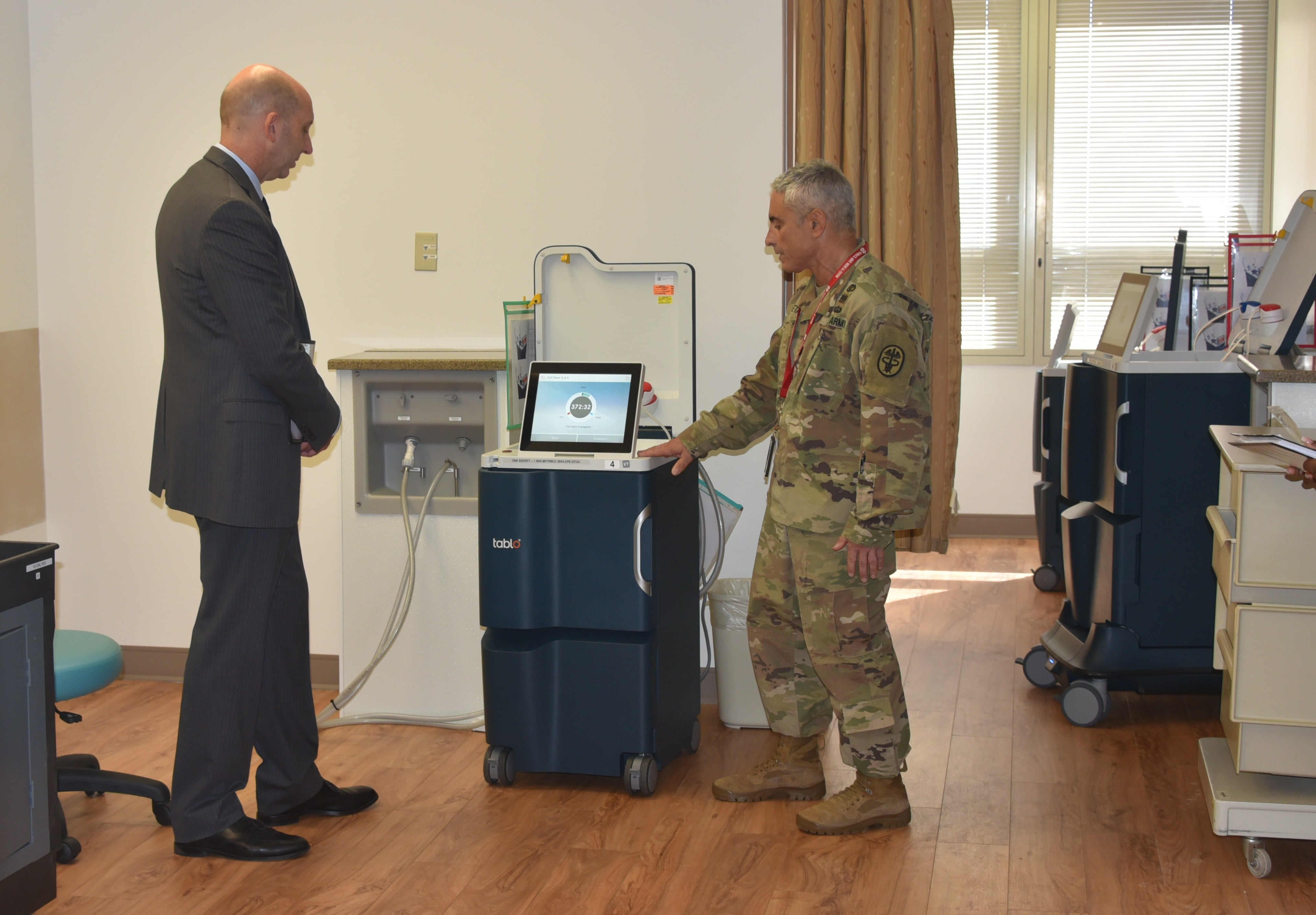Whether it'is divers at dangerous depths, aircrews at high altitudes or Marines in cold, wet climes, just about every old salt has a story about battling bitter chill.
But such battles may soon become a thing of the past.
Electrically heated thermal undergarments that maintain core temperatures in the most extreme conditions are in the works. Funded by the Office of Naval Research and developed by the Underwater Systems Development and Acquisition Branch at Naval Surface Warfare Center, Panama City Division, in Florida,Fla., the effort is focused on the diving community, but its headchief designer sees it them as an amphibious-based garment for use in and out of water.
"Water takes heat away from the body about 25 times faster than air," said John Klose, project engineer. "We figured if we built a system that works for divers, we'll be able to crack the nut for all the people that are topside or in aircraft that get cold, too."
Staying warm is the name of the game, but the goal is more than comfort; this is about resiliency and mental acuity, said Klose, a submarinerbubblehead by trade who has worked on underwater mobility projects for 25 years. A suit that maintains regular body temperature means the body doesn't need to expend energy to stay warm. In addition, your brain is much like your fingers and toes, the brain : It doesn't work well in frigid temperatures. Its ability to make decisions diminishes as it gets you get colder, and confusion — deadly in extreme conditions — can quickly set in quickly.
In seeking a solution, Klose first looked at heating fibers available in the commercialprivate industry, but none met the energy efficiency or safety levels required by naval standards. He was, however, intrigued by cCarbon nNano-cCore fibers produced by Coliant Corp.ration, a company that manufactures heated motorcycle jacket liners. An alliance was forged, made and design modifications followed over the next 18 months. The team put its prototype polypropylene long underwear to the test last fall and reported its findings in late December — and initial reports were good.
Unmanned testing measured heat characteristics at various voltages and found no hot spots. The latter has been a point of contention with electrically -heated diver thermal protection suits in the past, as hot spots tend to burn the diver. Manned testing in a 40-degree cold water tank followed at the University of Montana's Center for Work Physiology and Exercise Metabolism. That temperature was picked because 95 percent of diving operations are in waters 40 degrees and warmer, said Klose, who was among more than a one dozen subjects who took the plunge.
"That's the old sailor in me," he said. "I'm not about to put a test subject in something that I am not willing to wear myself."
For a sailor wearing a normal wetsuit in 40-degree water, Hhypothermia — a loss of core body temperature that can quickly lead to death — would take about 20 minutes in those water temperatures in a normal wetsuit. But Klose said he "was perfectly comfortable," sitting in the tank. Test results showed the subjects expended no extra energy to maintain core temperatures. In fact, the team found its suits used "a lot less power than other systems have used before" and still maintained core temperatures in that extreme environment.
But don't expect to find the suit in your dive locker run out to the exchange just yet. Klose's team must next work with Naval Sea Systems Command to transition this technology from a proof of concept to a program of record. That is not an easy task; the path is often referred to as "the valley of death." Klose will use the coming months to refine the product and design mission-specific prototype garments to better convince the bean counters and decision-makers.
Power will be the big obstacle to overcome. If power is drawn from the pier, a vehicle, a cockpit, or the like, "we know the voltages so we can engineer into that relatively quickly," Klose said. "But if we are talking about a portable power supply that a diver, sailor or Marine would have to carry with them, then we are into a battery system — and developing the battery system will take about as much time and money as the suit itself because there are so many stringent safety requirements."
Indeed, this is not a matter of throwing in a couple of AADuracells. Batteries that power this type of gear hold significant energy contained in small spaces, and that makes the power packs potentially dangerous and heavy — two attributes Klose is unwilling to accept.
The long-term goal is to make an intelligent garment that will monitor skin temperatures and automatically adjust power settings, Klose said. If the person is in hurry-up-and-wait mode, the suit will draw more power to save his energy. But if he is on the move and already generating a lot of extra body heat, the suit will use that expended energy and body heat to maintain the right balance — all without the operator having to fool around with temperature controls.
"I do think that we're just a couple of years away from being able to really solve this problem for people in a very safe and reliable manner, and without them carrying 10 pounds of batteries," Klose said.





